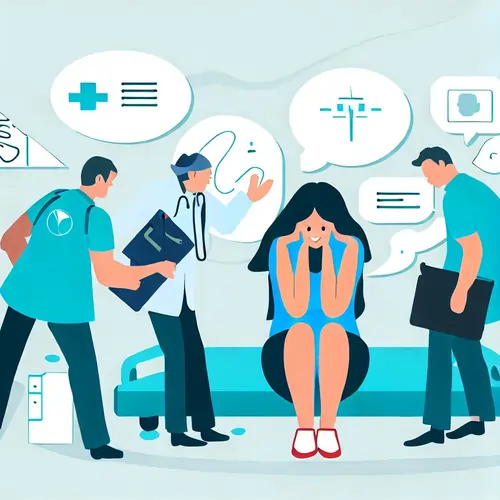Crisis Communication: A Guide for Healthcare Providers

In the ever-evolving landscape of healthcare, effective crisis communication is an indispensable skill for healthcare providers. Whether you're a seasoned nurse or a nursing student, understanding how to communicate during crises and risks is crucial. This blog post will explore the vital topic of crisis and risk communication in healthcare, providing insights that not only enhance your understanding but also offer valuable guidance for student seeking help with their nursing assignment related to this topic.
Understanding Crisis and Risk Communication in Healthcare
It involves not only conveying information promptly but also ensuring its accuracy and clarity, which can be challenging in high-stress situations. Furthermore, recognizing the emotional aspect of crisis communication and employing effective strategies for managing information overload are essential components of this critical skill set.

- The Essence of Crisis Communication
- Importance in Healthcare
Crisis communication in healthcare refers to the art of conveying vital information to various stakeholders during adverse events or emergencies. Healthcare providers, including nurses, play a pivotal role in ensuring that the right messages are delivered effectively and efficiently, which can significantly impact patient outcomes.
Communication breakdowns during crises can lead to confusion, panic, and potentially disastrous consequences. Healthcare providers must possess the skills to disseminate information, reassure patients and their families, and coordinate efforts with other healthcare professionals to manage crises effectively.
The Key Elements of Crisis Communication
The key elements of crisis communication in healthcare revolve around timeliness, accuracy, and clarity. Timeliness is crucial as swift response and information dissemination can mitigate the impact of crises. Ensuring accuracy prevents the spread of misinformation, while clarity ensures that messages are easily comprehensible, reducing confusion and panic during critical situations. These elements collectively form the foundation of effective crisis communication in the healthcare sector.
- Timeliness
- Accuracy
- Clarity
In the realm of healthcare, timing is everything. Healthcare providers need to act swiftly when a crisis emerges. Students can focus their assignments on discussing how timely communication can be achieved within a healthcare setting and the consequences of delays.
Ensuring that the information provided is accurate is paramount. Misinformation can lead to widespread panic and hinder effective crisis management. Assignments can delve into the strategies employed by healthcare professionals to verify and relay accurate information.
Healthcare providers must communicate in a way that is easily understandable to patients and their families. This aspect of crisis communication can be explored in assignments, emphasizing the use of plain language and appropriate channels of communication.
Challenges in Crisis and Risk Communication
Healthcare providers often grapple with the influx of vast amounts of data during crises, making it challenging to prioritize and convey critical information efficiently. Additionally, demonstrating emotional intelligence is vital when dealing with the heightened emotions of patients and their families, as it can profoundly influence the effectiveness of communication and overall crisis management. These challenges require healthcare professionals to develop strategies and skills that go beyond mere information dissemination.
- Managing Information Overload
- Emotional Intelligence
Healthcare providers often have to sift through vast amounts of data during a crisis. Assignments can discuss the challenges associated with managing this information overload and propose strategies to streamline the process.
Dealing with patients and their families during crises requires a high level of emotional intelligence. Students can explore the role of empathy, active listening, and effective bedside manner in crisis communication assignments.
Crisis Communication Tools and Strategies
Establishing comprehensive communication plans is crucial for ensuring a coordinated response, and outlining key responsibilities and communication channels. Moreover, the integration of technology, such as telemedicine and social media platforms, has become increasingly important in reaching a wider audience rapidly, enabling healthcare providers to disseminate accurate information and address public concerns efficiently. These tools and strategies empower healthcare organizations to navigate crises with precision and maintain public trust.
- Communication Plans
- Utilizing Technology
Assignments can detail the importance of having well-defined crisis communication plans in place within healthcare organizations. Students can analyze existing plans and suggest improvements.
In the digital age, technology plays a significant role in crisis communication. Nursing students can investigate the use of telemedicine, social media, and other technological tools in disseminating information during healthcare crises.
Practical Application
Case studies offer valuable insights into real-world crises, allowing healthcare professionals and students to analyze past communication strategies, their effectiveness, and areas for improvement. Simulated scenarios, on the other hand, provide hands-on experience by recreating crises, enabling individuals to practice their communication skills and refine their ability to handle high-stress, real-time situations. These practical approaches help healthcare providers and nursing students develop the necessary expertise to excel in crisis communication within the healthcare field.
- Case Studies
- Simulated Scenarios
Assignments can incorporate real-life case studies of healthcare crises, allowing students to analyze the communication strategies employed and their outcomes.
Simulated scenarios can help students practice crisis communication skills, providing them with valuable hands-on experience.
Conclusion
Crisis and risk communication in healthcare is a multifaceted and essential aspect of the nursing profession. Nursing students can benefit from delving into this topic in their assignments, learning the nuances of effective communication during crises, and understanding the implications for patient care and outcomes. If you're a student looking for an experienced nursing assignment doer related to crisis communication, don't hesitate to explore our website. Our resources and expert guidance can help you excel in your studies and develop the critical skills necessary for effective crisis communication in healthcare. Remember, in healthcare, the ability to communicate during crises can make all the difference in the world.